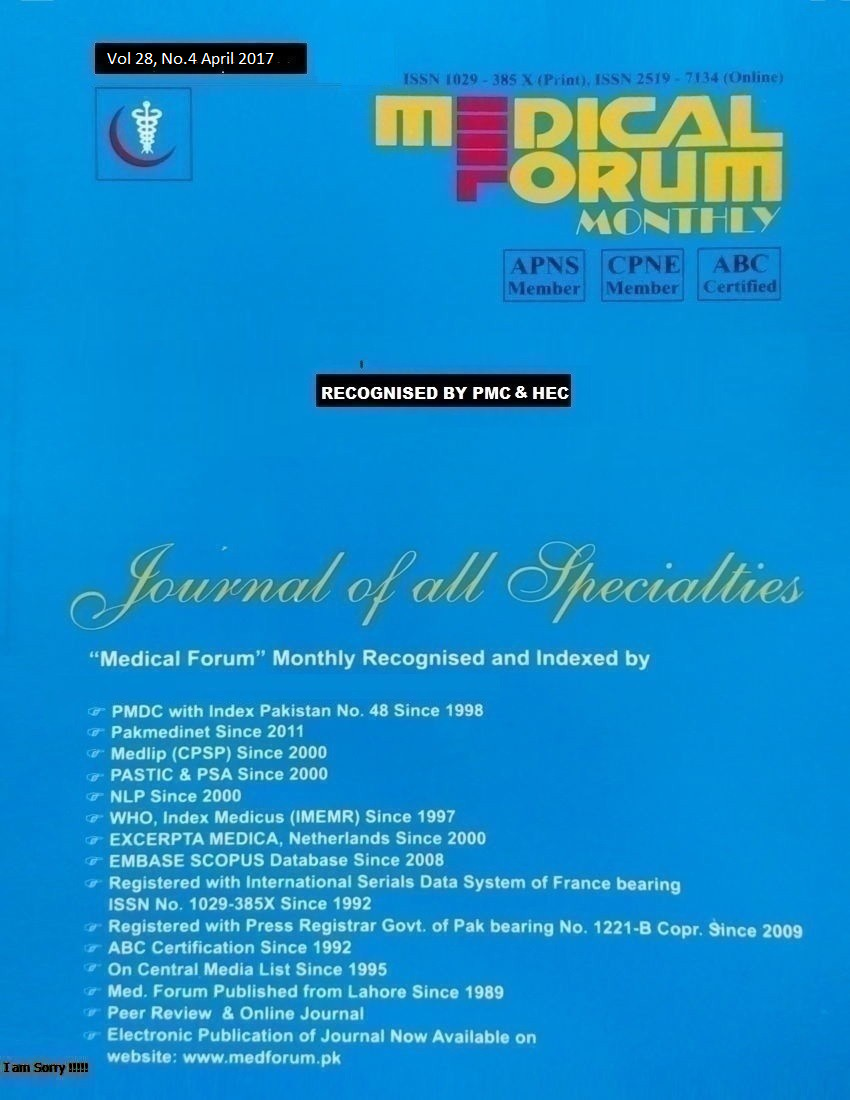
12. Frequency of Triple Negative Receptor Status in Patients Diagnosed with Carcinoma Breast
Ishrat Amna1, Nargis Noor1, Abrar Haider1 and Aamir Furqan2
ABSTRACT
Objective: To determine the frequency of triple negative receptor status in patients diagnosed with carcinoma breast.
Study Design: Descriptive / cross sectional study.
Place and Duration of Study: This study was conducted at the Department of Surgical Unit III of Nishtar hospital, Multan from July 2016 to December 2016.
Materials and Methods: A total of one hundred and seventy one female patients of age between 30-60 years who were diagnosed breast cancer were presented in this study. All numerical variables were presented as mean ± standard deviation and categorical variables were presented as frequency and percentages. Chi square test was applied to see the effect of confounders. P ≤ 0.05 was considered as significant.
Results: It was noted that out of 100% (n=171) patients, 20.5% (n=35) were having TNBC and 79.5% (n=136) were not. It was also observed that out of these 100% (n=171) patients, a big majority 78.9% (n=135) were having Menopausal Status and 21.1% (n=36) were not. While Family History of TNBC showed that 18.1% (n=31) were Positive TNBC. Out of these 100% (n=171) patients, a big majority 78.9% (n=135) were having Menopausal Status. While Family History of TNBC showed that 18.1% (n=31) patients with positive family history were having Positive TNBC.
While, the incidence of SSI in group B (without SD) was 20% (14/70) and 4% (03/70) in group A (with SD). Anastomosis leak was observed only in B group. The median post-operative hospital stay was 14 (range, 9-42 days) in B group and 12 days (range, 8-27 days) in group A. There were hospital re-admission in 03 patients of B group, with no mortality in any group. However, the incidence of SSIs when comparing both groups (group B versus group A), did reach statical significance of P < 0.38.
Conclusion: Breast cancer particularly triple negative disease was found in younger age group and patients usually present in advanced stage of their disease.
Key Words: Triple negative breast cancer, Ductal carcinoma in situ, Carcinoma breast, Metastasis
Citation of article: Amna I, Noor N, Haider A, Furqan A. Frequency of Triple Negative Receptor Status in Patients Diagnosed with Carcinoma Breast. Med Forum 2017;28(4):
